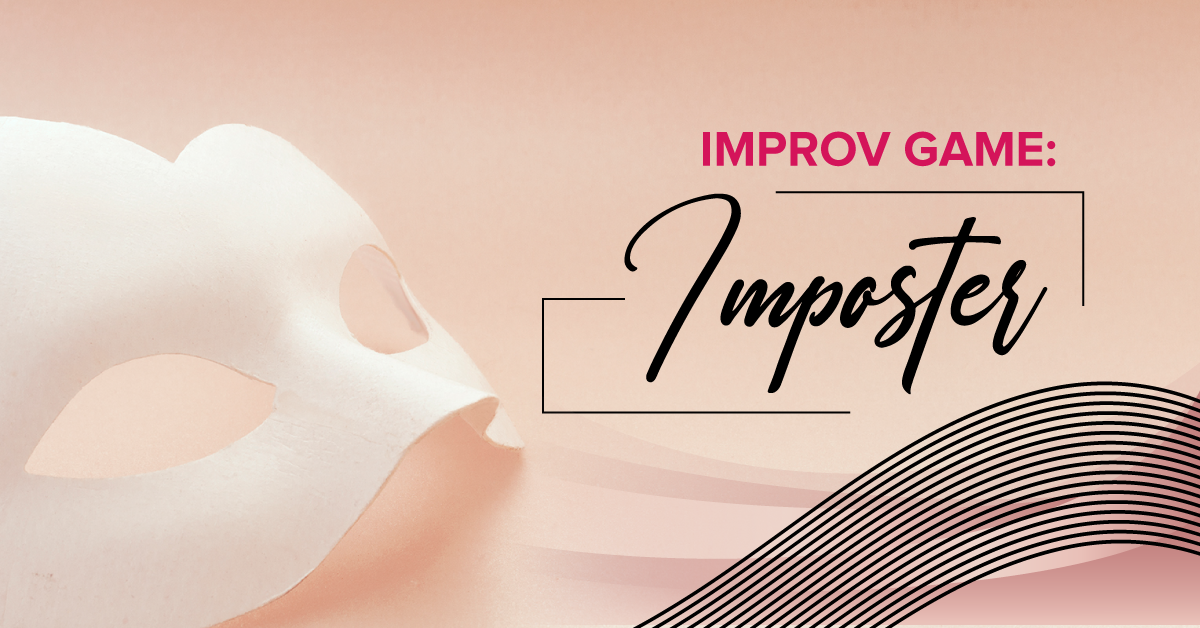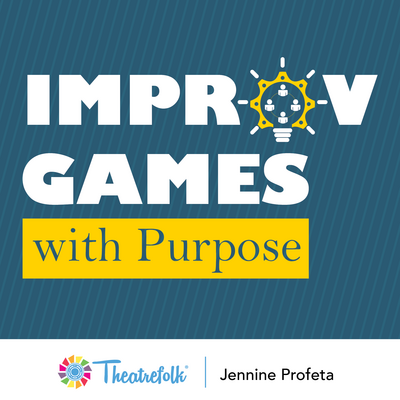Improv Game: Yes, And… and No, But…
In improvisation, one of the first rules that drama students are commonly taught is to always say, “Yes, and…” to continue the story. Basically, agree with presented concepts to keep the scene moving forward. If Partner A says, “Wow it’s so hot today!” and Partner B says, “What are you talking about, it’s freezing!” Partner B is stopping the scene from moving forward.
But what if the suggestion that one of the scene partners presents makes the other partner uncomfortable?
Teachers can try to circumvent awkward or uncomfortable improvised scenes by using prompts to direct the focus of the scene, but you never know where a student will take a scene or what they’ll bring up in the moment. We also can’t know what might be upsetting for a student until it occurs.
Once students have learned the basics of improvisation, including “Yes, and…” introduce “No, but…” as an option to take the improvised story in a different direction. This provides a way for students to reframe an uncomfortable situation.
Students are still responsible for participating in the scene, adding information, and not derailing the plot (for example, if your partner says something like, “Wow it’s so hot,” then that’s a given for the scene). But they can pivot and adjust where the scene is going. If Partner A says, “Hi Donna!” and Partner B says, “Guess what, I changed my name last week, you can call me Dean,” Partner B is saying No, but also adding information.
Having the ability to say “No, but…” is an important aspect of consent within the drama classroom. If students cannot say no, then their “yes” isn’t meaningful, because they don’t have a choice in the matter. Knowing that they have the ability to say no and adjust the scene tells students that their voices are being heard and respected, and that their feelings are important.
This is not to say that students should be allowed to not participate in scenarios they just don’t like or feel silly doing. We want to encourage our students to try new things, make mistakes, and explore. But it’s good to have a safeguard in place as well. And, when used sparingly in improvisation exercises, “No, but…” can be an interesting and creative way to contribute to the scene. And sparingly is the key word here.
Here’s a quick game you can try with your students to practice “Yes, and…” and “No, but…” You’ll need a timing device and a noisemaker, such as a bell.
1. Start by discussing with your students the concept of “Yes, and…” Remember, students don’t need to say that specific phrase — it simply means going along with suggestions and adding more to the scene. The goal is to keep the scene moving forward; you don’t want to derail it by denying the information your partner has given you.
2. Introduce the concept of “No, but…” Discuss scenarios in which students can pivot and adjust the scene if an uncomfortable situation occurs. It’s not to be used in every scene, or just because a student doesn’t like a given suggestion. Give a sample prompt or scenario and let the full group brainstorm different ways they could apply the idea of “No, but…” to the scenario (with or without the specific phrasing) that move the scene forward.
3. Have students form pairs. Select one pair of students to start an improvised scene. Let them know that each pair will be limited to one minute maximum for the scene. Students will focus on the spirit of “Yes, and…” to the best of their abilities.
4. When the timer reaches the 30 second mark, sound the noisemaker. Whoever’s line is next must use the “No, but…” prompt, and take the scene in a different direction. It doesn’t need to be wildly different, but it needs to go in a new direction while still being related to the earlier work in the scene (for example, same character names).
5. The scene will then continue until the end of the remaining time while going in the new direction from the “No, but…” prompt. Don’t worry if time runs out and the scene hasn’t ended. Sound the noisemaker to indicate that time is up and end the scene where it is. If possible, repeat with the next pair of students until everyone has had a chance to try.
6. Debrief with your students:
- How did “No, but…” affect the improvised scene?
- Was it difficult to take the scene in a new direction with “No, but…”? Why or why not?
- Why is it helpful to have a “No, but…” technique available to use?
Some students may find it difficult to say no to others, particularly if they’ve been taught continually about always saying yes in improv. While we don’t want to derail the scene going on, we want students to know that there is an option for them to say no to something that is upsetting for them. Having a consent-based option like “No, but…” ensures that students’ feelings are being respected, while keeping the improvisation fun and forward-moving.
Additional Resources:
Related Articles
Games for the Drama Classroom: More Than Play
by Lindsay Price
A collection of games and activities that go well beyond the notion of "play."
Improv Games with Purpose
by Jennine Profeta
Improv games including feedback suggestions and questions, game variations, teaching tips, side coaching tips, entry prompts, exit slip questions, and more!
Your High School Improv Show Playbook
by Jim Hoare
Have you wondered how to take improv to the next level with your students? Your High School Improv Show Playbook is the "how-to" guide for you! Empower students to present their first improv show that is fun and entertaining for all.
Impowerment Improv
by Jennine Profeta
Using improv to create self-awareness & confidence in your students







